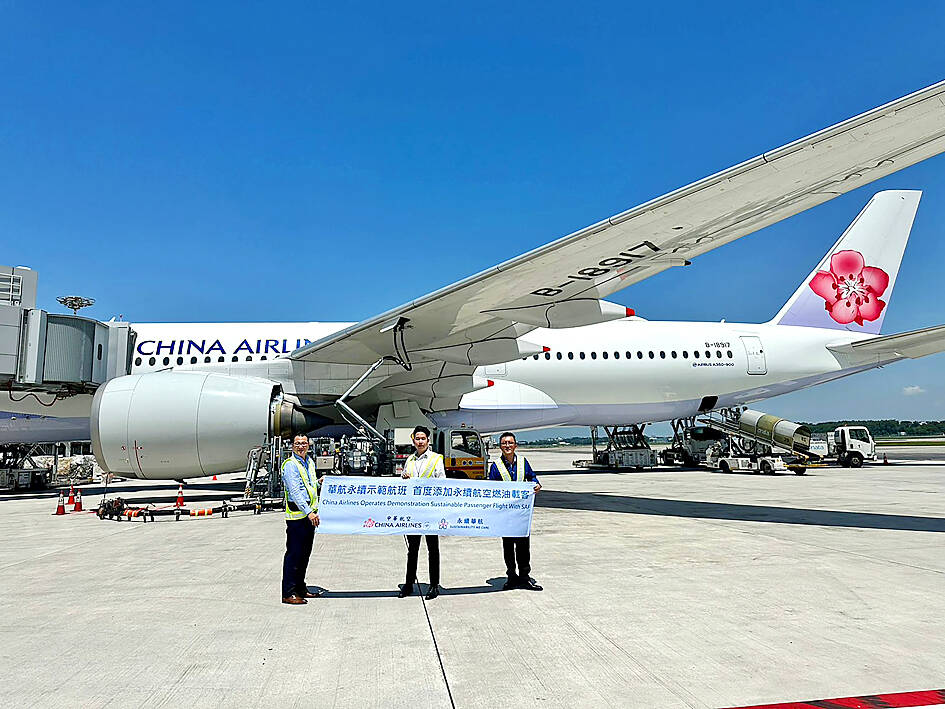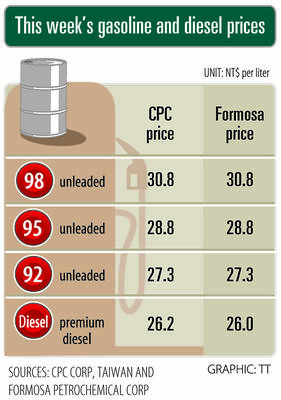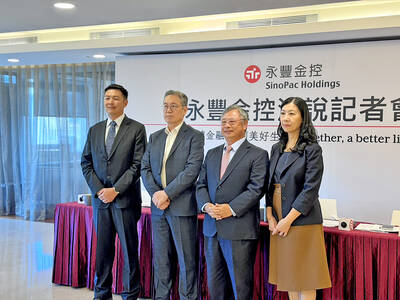China Airlines Ltd (CAL, 中華航空) yesterday launched its first passenger flight from Taipei to Singapore using sustainable aviation fuel, as the carrier aims to reduce carbon emissions despite higher costs.
The airline said it used 10 percent sustainable aviation fuel (SAF), which is made from renewable waste and residue materials such as cooking oil, and 90 percent traditional jet fuel for the flight.
As SAF generates 80 percent less carbon emissions than fossil jet fuel, CAL strategic planning department general manger James Chung (鍾人傑) said yesterday’s flight reduced carbon emissions by 8 percent.

Photo courtesy of China Airlines Ltd
The airline has used SAF for cargo flights for several years, but yesterday’s flight was its first passenger flight, as the Civil Aeronautics Administration is more cautious about airlines using the fuel than its foreign counterparts, Chung said.
The International Air Transport Association has tested a combination of 50 percent SAF and 50 percent fossil jet fuel, and found that it is safe, he said.
The European Council has mandated that all aviation fuel suppliers provide fuel containing at least 2 percent SAF by 2025, Chung said.
However, it is unlikely that the airline would use 100 percent SAF for passenger flights, as it is double the cost of traditional jet fuel and lacks sufficient domestic supply, he said.
“For a mid-haul flight from Taipei to Singapore, it costs us about US$10,000 more to use the 10 percent SAF, which is not particularly high, but if we use 100 percent SAF, the additional expense would be US$100,000,” Chung said.
The extra cost of using SAF would affect ticket prices, he said, adding that the airline would prefer to raise the proportion of SAF gradually.
The government should set up a policy to develop a domestic supply chain of SAF, and make it accessible to all airlines, he said.

SETBACK: Apple’s India iPhone push has been disrupted after Foxconn recalled hundreds of Chinese engineers, amid Beijing’s attempts to curb tech transfers Apple Inc assembly partner Hon Hai Precision Industry Co (鴻海精密), also known internationally as Foxconn Technology Group (富士康科技集團), has recalled about 300 Chinese engineers from a factory in India, the latest setback for the iPhone maker’s push to rapidly expand in the country. The extraction of Chinese workers from the factory of Yuzhan Technology (India) Private Ltd, a Hon Hai component unit, in southern Tamil Nadu state, is the second such move in a few months. The company has started flying in Taiwanese engineers to replace staff leaving, people familiar with the matter said, asking not to be named, as the

The prices of gasoline and diesel at domestic fuel stations are to rise NT$0.1 and NT$0.4 per liter this week respectively, after international crude oil prices rose last week, CPC Corp, Taiwan (台灣中油) and Formosa Petrochemical Corp (台塑石化) announced yesterday. Effective today, gasoline prices at CPC and Formosa stations are to rise to NT$27.3, NT$28.8 and NT$30.8 per liter for 92, 95 and 98-octane unleaded gasoline respectively, the companies said in separate statements. The price of premium diesel is to rise to NT$26.2 per liter at CPC stations and NT$26 at Formosa pumps, they said. The announcements came after international crude oil prices

A German company is putting used electric vehicle batteries to new use by stacking them into fridge-size units that homes and businesses can use to store their excess solar and wind energy. This week, the company Voltfang — which means “catching volts” — opened its first industrial site in Aachen, Germany, near the Belgian and Dutch borders. With about 100 staff, Voltfang says it is the biggest facility of its kind in Europe in the budding sector of refurbishing lithium-ion batteries. Its CEO David Oudsandji hopes it would help Europe’s biggest economy ween itself off fossil fuels and increasingly rely on climate-friendly renewables. While

SinoPac Financial Holdings Co (永豐金控) is weighing whether to add a life insurance business to its portfolio, but would tread cautiously after completing three acquisitions in quick succession, president Stanley Chu (朱士廷) said yesterday. “We are carefully considering whether life insurance should play a role in SinoPac’s business map,” Chu told reporters ahead of an earnings conference. “Our priority is to ensure the success of the deals we have already made, even though we are tracking some possible targets.” Local media have reported that Mercuries Life Insurance Co (三商美邦人壽), which is seeking buyers amid financial strains, has invited three financial